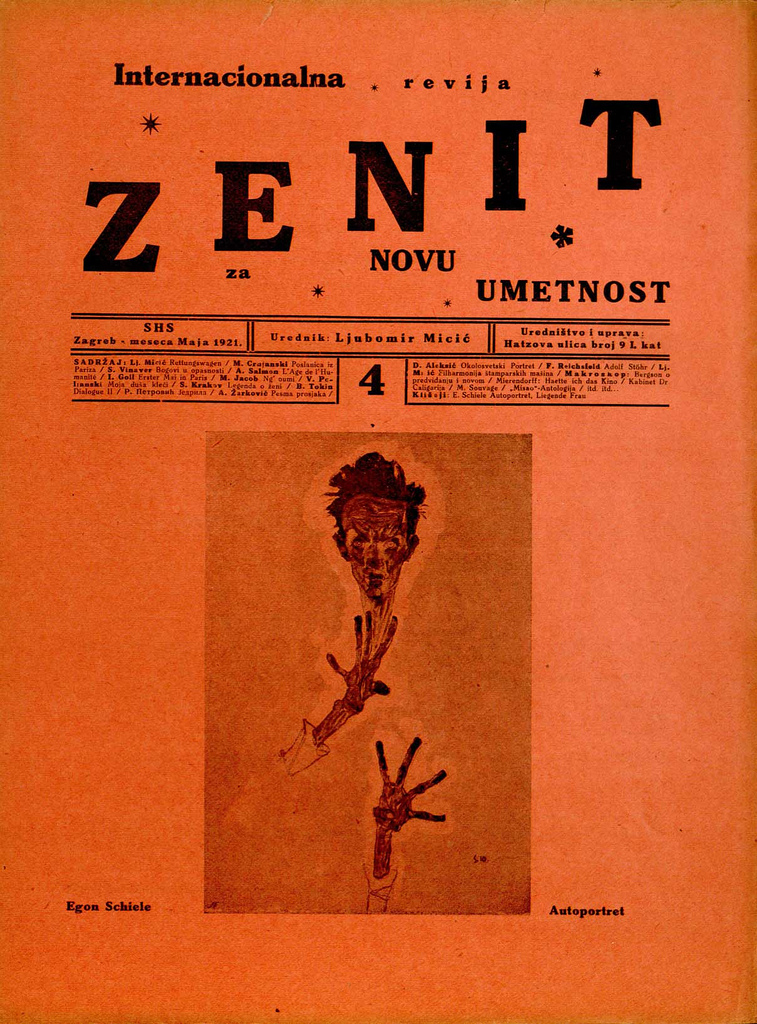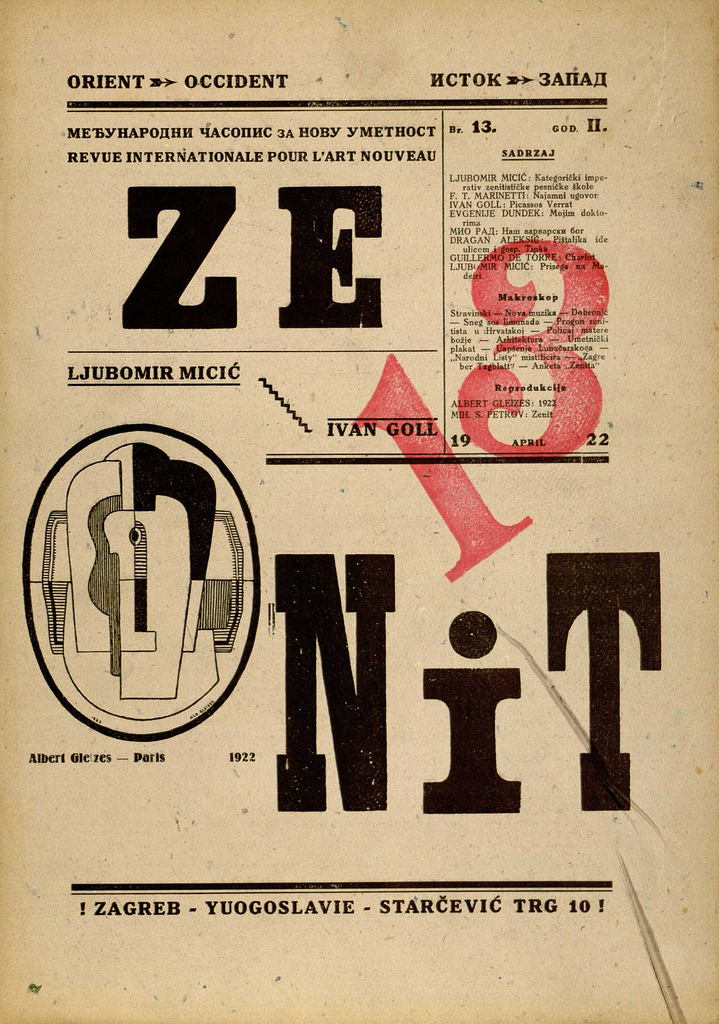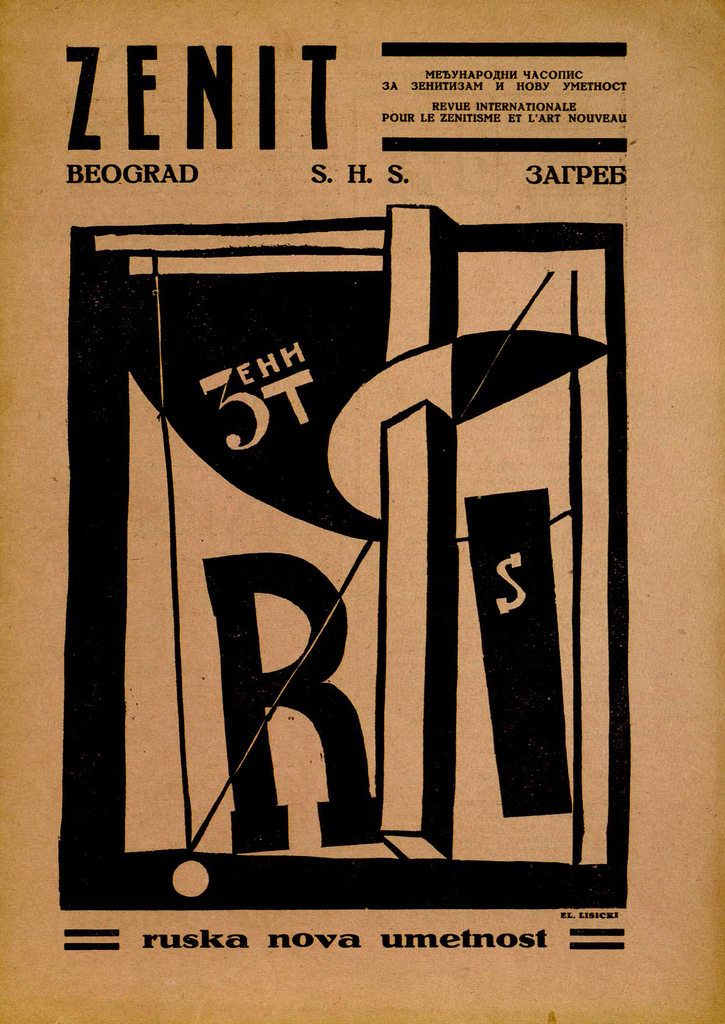Klaxon: mensário de arte moderna, No. 1-9 (1922-23) [Portuguese]
Filed under magazine | Tags: · art, avant-garde, brazil, futurism, poetry

Lançada em São Paulo no mesmo ano que se realiza a Semana de Arte Moderna, Klaxon (1922-1923) é a primeira revista modernista do Brasil.
Em “O Alegre combate de Klaxon”, excelente introdução á edição fac-similar da revista, Mário da Silva Brito afirma que “em Klaxon aparece, sob forma de artigos, poemas, comentários, críticas de arte, piadas e farpas zombeteiras, o estado de espírito do grupo de jovens que elaborou a ideologia modernista”. Do comitê de redação, participam ativamente Menotti del Picchia e Guilherme de Almeida. Porém , ainda que a revista não o registre de forma explícita, sabe-se hoje, por intermédio de Aracy Amaral, que Mário de Andrade foi “diretor e líder da revista“. Mesmo assim, de um número para outro prevalece o espírito de grupo anunciado no texto introdutório : “KLAXON tem uma alma coletiva”. Essa apresentação tem todas as características de um manifesto e, embora venha assinada pela Redação, ela é, segundo Mário da Silva Brito, de autoria de Mario de Andrade. (source)
Published in São Paulo, Brazil
via Brasiliana USP
commentary (Jorge Schwartz, in Portuguese)
Klaxon at Wikipedia (in Portuguese)
PDF (all issues, ZIP)
Download Issue 1 (May 1922), Issue 2 (June 1922), Issue 3 (July 1922), Issue 4 (Aug 1922), Issue 5 (Sep 1922), Issue 6 (Oct 1922), Issue 7 (Nov 1922), Issue 8-9 (Dec 1922-Jan 1923).
Zenit, International Review of Arts and Culture, No. 1-43 (1921-26) [SH/FR/DE/RU]
Filed under magazine | Tags: · art, avant-garde, collage, constructivism, croatia, dada, expressionism, futurism, painting, serbia



Zenit, International Review of Arts and Culture, enjoyed a reputation as the only Yugoslav avant-garde journal, which was part of the international avant-garde scene at the beginning of the 1920s. Its founder, editor and the chief ideologist of the Zenit programme Ljubomir Micić, poet and art critic, intended to introduce social and artistic principles of avant-garde to Croatia and Serbia, particularly constructivism, futurism and Dada.
It was launched in February 1921 and published monthly in Zagreb (1921-23) and Belgrade (1923-26) until December 1926, when it was banned by the authorities. A total of 43 issues were published (including special number dedicated to young Czech artists, and No. 17-18 to the new Russian Art, edited by Ilya Ehrenburg and El Lissitzky), as well as one poster, “Zenitismus”, and one issue of a daily Zenit newspaper dated 23 September 1922.
The magazine brought together a number of collaborators: Marijan Mikac, Jo Klek (Josip Seissel), Vilko Gecan, Mihailo Petrov, Boško Tokin, Stanislav Vinaver, Rastko Petrovic, Branko Ve Poljanski (Branko Micić), Dragan Aleksic, Milos Crnjanski, Dusan Matic and others. Other collaborators and contributors included the French poet Ivan Goll, Alexander Archipenko, Ilya Ehrenburg, Wassily Kandinsky, El Lissitzky, Louis Lozowick, Alexander Blok, Jaroslav Seifert. The visual contributions by Jo Klek and Mihailo Petrov epitomized Zenitist art and painting.
PDF (single issues, PDF)
PDF (all issues, ZIP, 148 MB)
Gerald Janecek: Zaum: The Transrational Poetry of Russian Futurism (1996)
Filed under book | Tags: · art, art history, avant-garde, futurism, poetry, russia

“This is the most comprehensive treatment of a significant episode of the historical avant-garde period to which many refer but with little concrete background. According to Charlotte Douglas (Russian and Slavic Studies, NYU), Zaum ‘is an encyclopedic account of zaum or ‘beyonsense,’ the most distinctive feature of Russian avant-garde art and poetry early in the 20th century. Janecek has mined a myriad of arcane and inaccessible sources, gathered the entire historical record in one place, and made it readable and comprehensible. His account of zaum theory and practice will be indispensable for anyone interested in modern poetry and art. Certainly it will become a standard text for all students of Russian Futurism.'”
Publisher San Diego State University Press, 1996
ISBN 1879691418, 9781879691414
xi+427 pages
via greatjob
Review: Walter Comins-Richmond (Slavic and East European J, 1997).
PDF (removed on 2017-8-21 upon request of the publisher – read the Introduction)
See also Vladimir Markov’s Russian Futurism: A History
Comment (0)
